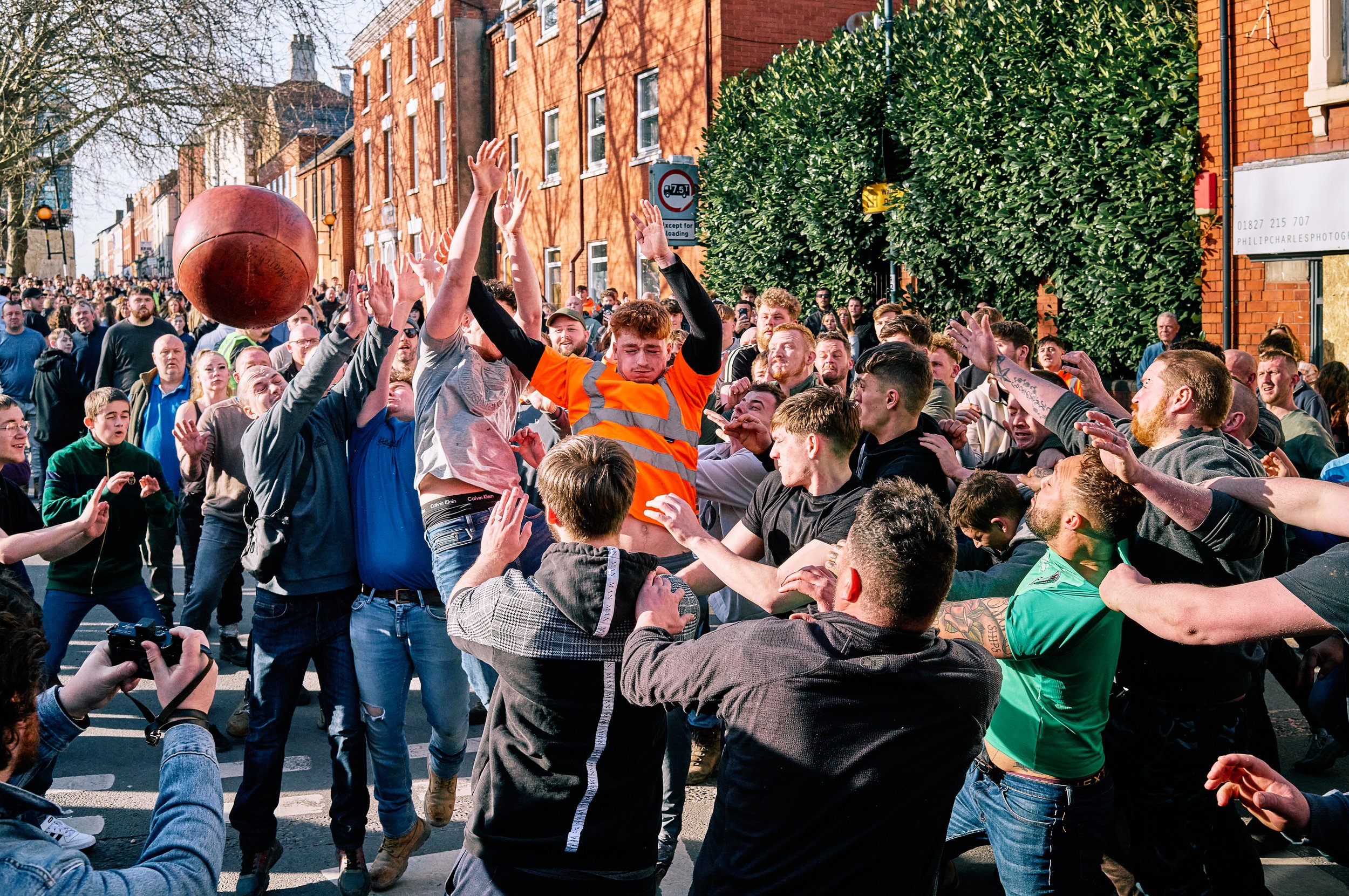English Football’s Ancient Roots
In England, football is more than a sport; it is a tradition with a social and cultural context.
My dad devoted much time to my sister and me during our childhood. One of my favourite memories is holding his hand as we entered the Derby County football stadium just before the club peaked in the early 1970s. The stadium had tiered standing areas, and I remember feeling secure within the supporter community as I was passed over the heads of others to get a better view. These cherished moments are ones I will never forget.
Derby County was founded in 1884, shortly after the English Football Association was established. The origins of football in England can be traced back to medieval times when the game resembled a chaotic brawl among townspeople. Some early versions of the game focused on ball possession until the end of the match, while others, more akin to modern football, aimed to advance a ball toward a goal through the opposing team’s territory.
Origins
The following is an excerpt from Charles Cotton’s poem “Burlesque upon the Great Frost” (1683), which depicts a winter mob football match between two towns.
Two towns, that long that war had raged
Being at football now engaged
For honour, as both sides pretend,
Left the brave trial to be ended
Till the next thaw, for they were frozen
On either part at least a dozen,
With a good handsome space between 'em
Like Rollerich stones, if you've seen 'em
And could no more run, kick, or trip ye
Than I can quaff off Aganippe
This photo essay shares my experiences at the Atherstone Ball Game on Shrove Tuesday 2025 and Ashbourne’s Royal Shrovetide Football match on Ash Wednesday. Immersed in a brotherhood that values each other’s well-being, I was reminded of the nostalgic community fellowship of my childhood.
Atherstone, 4th March 2025
Atherstone Ball Game played on Long Street | ©Martin Urch
The Atherstone ball game is a medieval event held annually on Shrove Tuesday in Warwickshire, England. Records of the game date back to 1199. A special locally crafted ball of hand-stitched leather filled with water for added weight is used during the game. It is one of the oldest surviving traditions of its kind in England. Over the centuries, the game has evolved. It was once played throughout the town but is now confined to a single street to minimise property damage.
Children practice moves on thrown sweets before the Ball Game | ©Martin Urch
Play begins at 3 pm as the Atherstone Ball is thrown into play | ©Martin Urch
The Atherstone Ball Game takes place on Long Street, where shops, bars, and restaurants are boarded up in preparation for the event’s intensity. The festivities start before 3 PM, creating a family-friendly atmosphere as children chase after sweets. Kids are also encouraged to touch the ball in the game’s early stages, fostering engagement with the next generation. However, the adults engage in a rough and violent brawl, featuring punches, gouging, and kicks as participants fiercely compete.
Marcus Cooper mid-game with ball possession | ©Martin Urch
The ancient game has few rules. The main objectives are maintaining possession of the ball, staying on Long Street, and “not killing anyone.” The two thousand closely packed spectators apologise for stepping on your toes while shouting for their favourite player, excitedly admiring and cheering the gladiatorial blows. The player who holds the ball when the 5 PM horn sounds will be declared the winner, a sought-after local accolade.
Marcus Cooper won this 825th edition of the historic event.
Ashbourne, 5th March 2025
Farmer Brian Pegg, Ash Wednesday’s “turner-up” | ©Martin Urch
Royal Shrovetide Football has been played in Ashbourne, Derbyshire, since at least 1667. The game uses a hand-painted cowhide ball filled with cork shavings and gained royal patronage in 1922 when Princess Mary received a ball as a wedding gift. It starts from a plinth in Shawcroft car park, 1.5 miles from each goal, and takes place over two days, beginning at 2:00 PM after the National Anthem. Each day ends when a goal is scored after 6:00 PM or at 10:00 PM.
The field of play covers about three square miles, which includes the town, fields, marshes, river, and pond. Participants were divided into two large teams, each consisting of at least 200 players: the Up’Ards and the Down’Ards, named after the side of the Henmore River where they were born or live. Players form a ‘hug’—similar to a rugby scrum—and advance the ball through intense running mauls. The rules are minimal: “murder and manslaughter are prohibited,” and there are designated no-play areas, such as church grounds.
In the marshes, as the Ball is thrown from the Hug | ©Martin Urch
Success depends on fitness, strength, and strategy, with hedges and fences being used tactically. The ball can sometimes be hidden during the game, making it challenging for players and thousands of spectators to locate it. On Tuesday, the ball was lost for two hours before reappearing in the hands of a lone Down’Ards runner who managed to ‘escape’ the pack and scored a goal by tapping the ball three times against the millstone at Clifton Corn Mill. On Wednesday, I witnessed the ball thrown over a hedge into private gardens, hidden for an hour before reemerging in the marshes.
The Down’Ards won the 2025 edition of Royal Shrovetide Football 1-0, with Martyn Taylor scoring a Tuesday goal.
Conclusion
The Atherstone Ball Game dates back to the 12th century, while Ashbourne’s Royal Shrovetide Football originated in or before the 17th century. Both games are significant cultural events with pagan roots and hold devout importance for the local communities. They help foster a sense of unity through ancient traditions, combining sport with a festive atmosphere. Despite ongoing challenges related to modern safety concerns, these games endure due to the passion and commitment of the local people.
To read more about ancient ball games in England, I cover St. Ives’ one-thousand-year-old Hurling the Silver Ball here.
What’s next
On the 20th of March 2025, I will join Druids in their full robes and artefacts to celebrate the Spring Equinox on haunted Tower Hill overlooking the atmospheric Tower of London.
Martin Urch Photography owns the copyright to all writing and mages.







